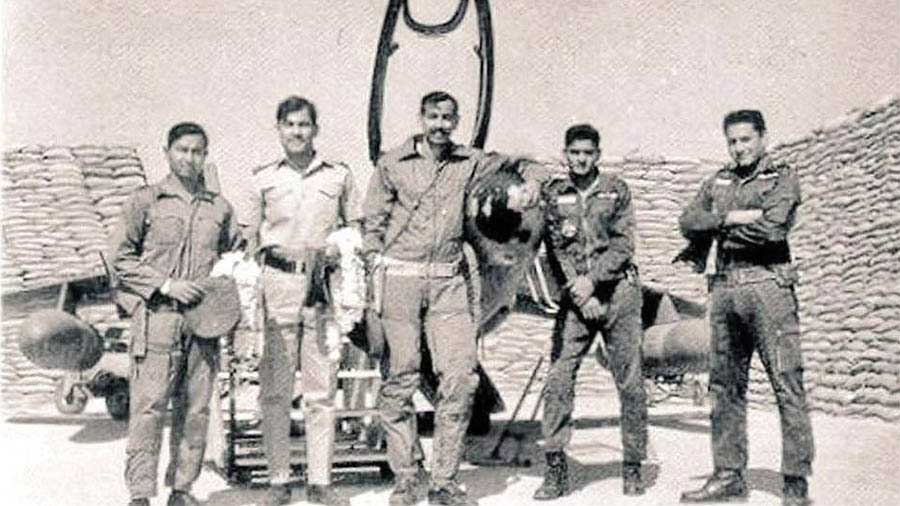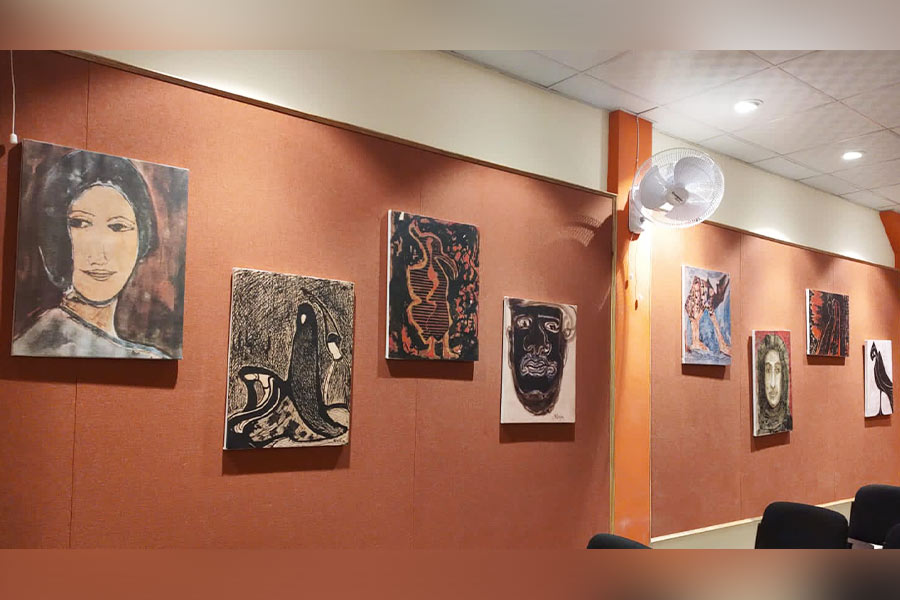Ever since the West Pakistani administration of Yahya Khan launched the brutal crackdown on the Bengali speaking population of East Pakistan (now, Bangladesh) on the night of March 25, 1971, another armed conflict between India and Pakistan became inevitable. Indian Prime Minister Indira Gandhi wanted to move in to stop the atrocities on India’s eastern border immediately but Chief of the Indian Army, General Sam Maneckshaw postponed the plans due to the impending monsoons which would have severely impeded movement of Indian troops and heavy artillery.
By late October however, preparations were in full swing on the Indian side for direct action. The Boyra salient in northwestern East Pakistan consisted of Garibpur, and was at an important crossroads for both nations. Its control was thus vital, as it gave the Indian Army a highway to Jessore from India. In mid-November, the 14th Punjab Regiment, aided by tanks from Charlie squadron 45 Cavalry and 102nd Engineers were ordered to cross the river west of Garibpur, occupy the village and cut-off the Pakistani 107th Infantry Brigade from Jessore.
The 14th Punjab Regiment duly occupied Garibpur by daylight of November 20, 1971, with practically no resistance. However, a chance encounter between an Indian patrol and a Pakistani patrol gave away the secret and by early hours of November 21, the 14 Punjab came under severe attack by three battalions from Pakistani 107 Infantry Brigade supported by M24 Chaffee tanks. In the Battle of Garibpur that followed, PT-76 tanks from India’s 45 Cavalry completely decimated the Pakistani tanks. The Pakistani forces were handed out a severe drubbing. Events of this battle incidentally form the core plot of the Hindi movie Pippa that recently premiered on Prime Video.

Pakistan Air Force's F-86 Sabres, photographed in 1958
Wikimedia CommonsFrustrated at the humiliating defeat, the Pakistani Army called in air strikes from the Pakistan Air Force (PAF). F-86 Sabres from Dacca (Dhaka) strafed 14 Punjab positions at 3pm on November 21. The 14 Punjab asked the Indian Air Force for support and four Folland Gnats from IAF 22 Squadron were immediately moved to Dum Dum airport.
As daylight broke on November 22, the IAF Gnat pilots were raring to go. Twice during that morning — at 0811 hours and 1128 hours — reports of PAF Sabres entering Indian airspace had been radioed from the radar control at Barrackpore. Both times, the Gnats had taken to air but couldn’t spot the Sabres which had flown back to comfort after strafing the 14 Punjab positions. They flew back dejected to Dum Dum even as the IAF liaison with 14 Punjab got an earful.
At 1448 hours, with the pilots resigned to a fruitless day, warning came in from Barrackpore a third time. Without wasting a second, the four Gnats were airborne, being vectored towards the target by Barrackpore radar control. The formation was led by Flt Lt Roy Andrew ‘Mouse’ Massey with Flying Officer Sunith Francis ‘Su’ Soares as his wingman. Flt Lt Mandepanda Appachu ‘Gun’ Ganapathy with his wingman Flying Officer Donald ‘Don’ Lazarus brought up the rear. For the initial few moments, they could see nothing but the clear blue sky.
Then Soares spotted a PAF Sabre coming out of the sun. Immediately, the four Gnats dashed in for battle. The three Sabres were now caught like deer in headlight. Lazarus and Ganapathy fired their .22 mm cannons and the shells ripped apart the Sabres. A pumped up Ganapathy shouted the brevity code on the R/T channel “Murder! Murder! Murder!” The PAF pilots, Parvaiz Mehdi Qureshi and Khaleel Ahmed, ejected safely and were captured by 14 Punjab. The damaged aircrafts crashed near Bongaon (Bangaon) village of West Bengal.
Meanwhile, the third Sabre piloted by Wing Commander Afzal Chaudhury now decided discretion was the better part of valour and tried to fly back to East Pakistan. But Massey had other ideas. He chased it deep into East Pakistan all the while pumping it with his cannon. Eventually, realising his precarious position, Massey turned back towards base. The Sabre, badly damaged and billowing thick black smoke, managed to fly back to Dhaka. End to end, the action had lasted for two and a half minutes.
The daring dogfight had been witnessed by thousands of people on ground on both sides of the border. As the PAF Sabres crashed, huge cheers went up from 14 Punjab and the Mukti Bahini guerillas. They became defining images of IAF’s air superiority in the Eastern theatre. Massey, Soares, Lazarus and Ganapathy became instant celebrities and received a special gift — a bottle of champagne from the Eastern Command Chief. All four were honoured with the Vir Chakra medal. Flying Officer Kalyan Brata Bagchi, the controller at Barrackpore, was awarded the Vayusena medal.
Incidentally, Parvaiz Mehdi Qureshi, one of the downed pilots would go onto have a distinguished career in the PAF. In 1996, Qureshi was appointed as Chief of PAF. On hearing of the news, Donald Lazarus, by then retired and working as a missionary, sent him a congratulatory message, mentioning their “meeting” over Boyra. Lazarus did not expect a reply and was pleasantly surprised when a letter signed by the PAF Chief arrived for him some days later. In it, Qureshi thanked him for the congratulations and complimented Lazarus for his exceptional flying skills in the Boyra battle.
Acknowledgement: Eagles over Bangladesh: The Indian Air Force in the 1971 Liberation War by P.V.S Jagan Mohan and Samir Chopra








